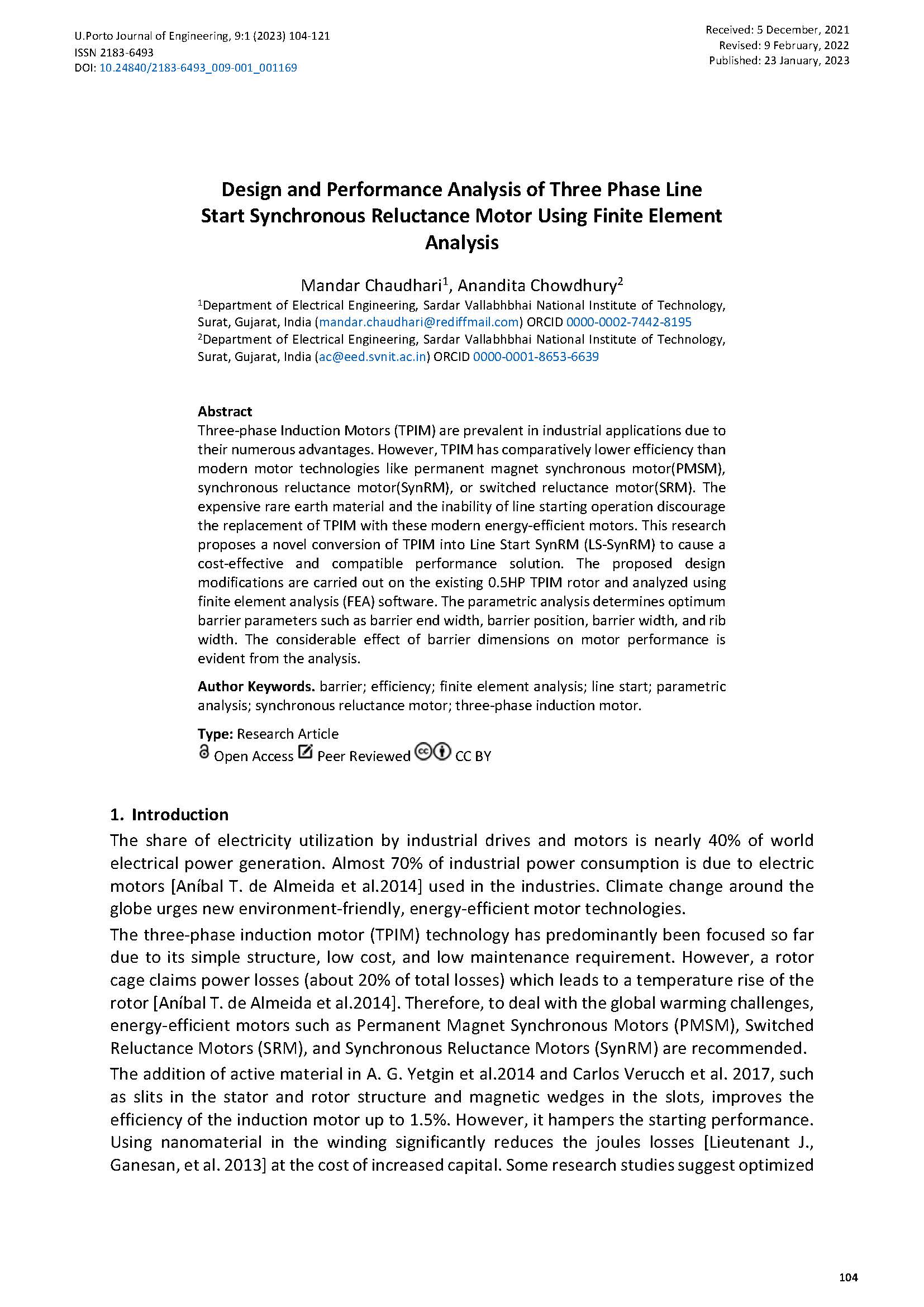Design and Performance Analysis of Three Phase Line Start Synchronous Reluctance Motor Using Finite Element Analysis
Main Article Content
Abstract
Three-phase Induction Motors (TPIM) are popular in industrial applications due to their numerous advantages. However, TPIM has comparatively lower efficiency than modern motor technologies like permanent magnet synchronous motor(PMSM), synchronous reluctance motor(SynRM), or switched reluctance motor(SRM). The expensive rare earth material and the inability of line starting operation discourage the replacement of TPIM with these modern energy-efficient motors. This research proposes a novel conversion of TPIM into Line Start SynRM (LS-SynRM) to cause a cost-effective and compatible performance solution. The proposed design modifications are carried out on the existing 0.5HP, TPIM rotor and analyzed using finite element (FE) software. The optimum barrier parameters such as barrier end width, barrier position, barrier width, and rib width have been determined through parametric analysis. The considerable effect of barrier dimensions on motor performance is evident from the analysis.
Downloads
Article Details

This work is licensed under a Creative Commons Attribution 4.0 International License.
Authors who publish with this journal agree to the following terms:
- Authors retain copyright and grant the journal right of first publication with the work simultaneously licensed under a Creative Commons Attribution License that allows others to share the work with an acknowledgement of the work's authorship and initial publication in this journal.
- Authors grant the journal the rights to provide the article in all forms and media so the article can be used on the latest technology even after publication and ensure its long-term preservation.
- Authors are able to enter into separate, additional contractual arrangements for the non-exclusive distribution of the journal's published version of the work (e.g., post it to an institutional repository or publish it in a book), with an acknowledgement of its initial publication in this journal.
- Authors are permitted and encouraged to post their work online (e.g., in institutional repositories or on their website) prior to and during the submission process, as it can lead to productive exchanges, as well as earlier and greater citation of published work (See The Effect of Open Access).

